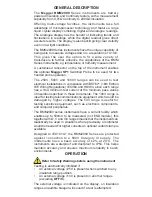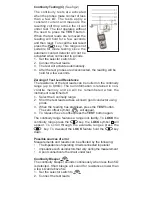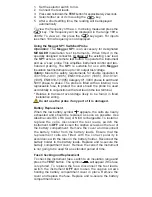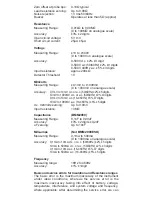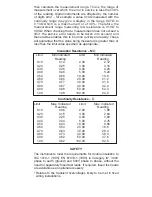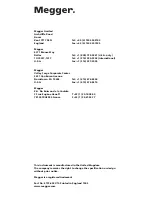
Continuity Testing (
Ω
) (See fig.2)
The continuity tests are activated
when the probes make contact of less
than a few k
Ω
. The tests apply a
constant current and measure the
resulting volt drop across the circuit
under test. The test operates without
the need to press the TEST button.
When the test leads are removed the
reading will hold for a few seconds
and then reset. To recall the last result
press the
key. This range is not
suitable for diode testing since the
automatic contact detector will not be
activated when connected to a diode.
1. Set the selector switch to
Ω
.
2. Connect the test leads.
3. The test will activate automatically.
4. After the test probes are disconnected, the reading will be
held for a few seconds.
Zeroing of Test Lead Resistance
The resistance of the test leads can be nulled on the continuity
range (up to 9,99
Ω
). The null information is retained in non-
volatile memory and so will be remembered when the
instrument is switched off.
1. Select the Continuity range.
2. Short the test leads across a known good conductor using
prods.
3. When the reading has stabilised, press the TEST button.
The zero offset symbol
will appear.
4. To release the zero offset press the TEST button again.
The continuity range features a range lock facility. To LOCK the
continuity range press the
key, the LOCK symbol will
appear. To scroll through the available ranges press the
key. To de-select the LOCK feature hold the
key
down.
Possible sources of error
Measurements and results can be effected by the following:
•
The impedance of operating circuits connected in parallel
•
Impedance such as inductors that vary during the measurement
•
A poor connection to the circuit under test.
Continuity Bleeper
The continuity bleeper sounds continuously when less than 5
Ω
is detected. Short bleeps will sound for resistances lower than
a few k
Ω
and above 5
Ω
.
1. Set the selector switch to
2. Connect the test leads.
FIG.2


